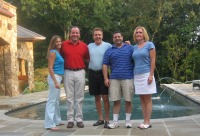Are you a Multiplier or a Diminisher?
We have all read and been told by the business guru’s that people are your most important asset. Given that about 70% of US businesses are service and information oriented, most of us have experienced that people are not only the asset, but also a good portion of the problem. In fact, one of the hardest things to do in business is to get people on the same page. It’s not easy to find a balance of working together happily and growing, without people fighting back thinking you are trying to control them.
Have you worked with someone that stifles the conversation and has all the answers? At the other end of the spectrum, have you worked with someone that brings people up and lifts the intelligence of the group?
The first is called a Diminisher, and the second a Multiplier, based on the extensive research that Liz Wiseman did and wrote about in her book Multipliers. She spoke at the recent Fortune Growth Summit and exposed us to some very profound ideas around leadership that I have never heard before.
Liz gave an example on how powerful the right questions can be, and if you’re a parent, you may want to try this. Liz was telling a colleague about how difficult it was around her house at bedtime. She described how she was bossy and frustrated with her kids. Her colleague challenged her to speak to her kids only in the form of questions. No orders, no statements, only questions. That night at bedtime, Liz asked her kids “What time is it?” They said bedtime. She then asked “What do we do at bedtime?” The kids scrambled to put on their pj’s, brush their teeth, and get ready for bed, all while Liz stood in the hallway in shock. She continued the questions, with the kids understanding and eager to respond. She went on to say that this approach transformed her parenting, along with many leaders that she had coached using this method.
We have all shown characteristics on each side. Even Bill Campbell, the coach to many popular CEO’s like Steve Jobs and Eric Schmidt, talks about his Diminisher qualities over his career. I too have found that I stifle my team with my Maximizer tendencies, by jumping in to fix things or make something happen. This causes them to sit back and let someone else figure it out, rather than thinking and acting themselves. On the other hand, I also go into meetings with lot of questions and try to pull out the group’s knowledge. Remember my “WHY” addiction?
So are you a Multiplier or a Diminisher? Check out Liz’s book Multipliers to see all the differences and learn how to be a better Multiplier. Also check out this interview Liz had with Verne Harnish.





